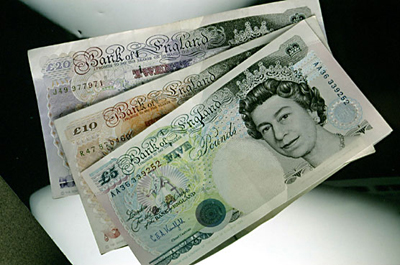Monday, 30 March 2015 16:42
 LONDON: Sterling fell against the dollar on Monday, weighed down by political worries on the first official day of a national election campaign that looks set to finish with no party holding an outright majority.
LONDON: Sterling fell against the dollar on Monday, weighed down by political worries on the first official day of a national election campaign that looks set to finish with no party holding an outright majority.
With parliament dissolved, Prime Minister David Cameron will go to Buckingham Palace to meet Queen Elizabeth later in the day, a formality marking the symbolic end of five years of coalition government between Cameron’s Conservatives and the Liberal Democrats.
In anticipation of the May 7 election, the outcome of which is the most uncertain in decades, the price of hedging against big price swings in sterling’s exchange rate over the coming two months was driven to its highest in 3-1/2 years earlier this month.
Britain’s continued membership of the European Union hangs on the outcome, as does the future of the increasingly frayed balance of power between the United Kingdom and its most assertive constituent part, Scotland.
Sterling was 0.2 percent lower against the dollar on Monday at $ 1.4851, matching a 0.2 fall for the euro versus the dollar.
“You’re seeing the first signs that some political risk has been priced into sterling,” said Daragh Maher, a currency strategist at HSBC, explaining that on an interest rate differential basis, sterling should be trading higher. But he also said sterling tended to track euro/dollar.
“It almost feels like a little brother, tracking euro/dollar round the fairground,” he said. “I think we’re seeing the same kind of pattern playing out this morning.”
Data released on Monday showing UK mortgage approvals reached a six-month high in February, which suggests the housing market could start to regain momentum, appeared to have no impact on the pound.
Sterling was given a boost on Friday when Bank of England Governor Mark Carney said the next move in interest rates was likely to be upward, tempering speculation that rates could be lowered if inflation stays subdued.
Against the euro, which was down across the board, sterling was 0.2 percent higher at 73.015 pence. That follows two weeks of gains for the single currency that saw it rise almost 5 percent since hitting a seven-year low of 70.145 pence on March 11.
“Last week became the second consecutive winner (for euro/sterling) after having spiked to the downside early March. The rejection and following rally clearly raises the question whether the past seven years decline now have come to an end,” wrote technical FX strategists at SEB in a research note.
Copyright Reuters, 2015




























